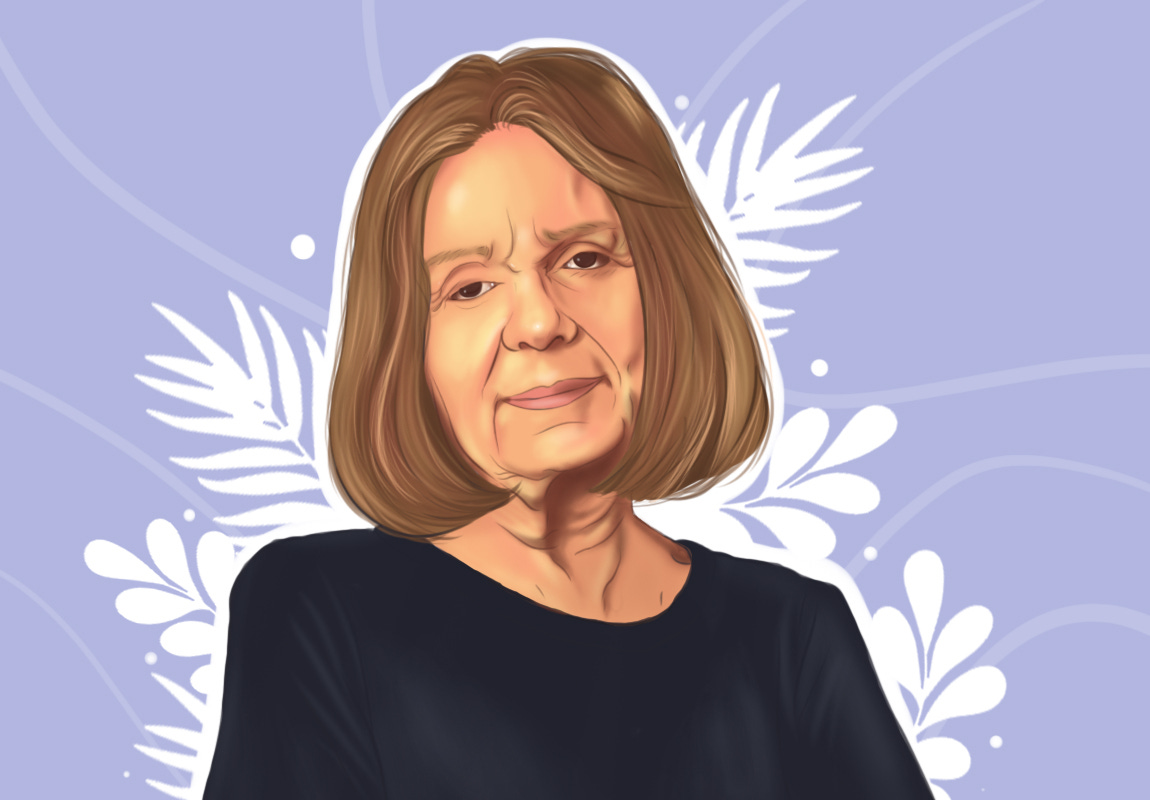Gloria Steinem, American feminist, journalist and social activist is a pioneering figure in the women’s liberation movements in the 20th and early 21st centuries.
Gloria was born on March 25, 1934, in Toledo, Ohio, as the second child of Leo and Ruth Steinem. Her father, Leo Steinem, worked as a travelling salesman. Gloria spent her early years travelling with her parents in a house trailer.
Her parents got divorced in 1946. After that, Gloria settled with her mother in Toledo, Ohio, and, for the first time in her life, started going to school on a regular basis. She also had to take care of her mother, who was chronically depressed.
After graduating from high school, Gloria’s sister came to take care of their mother. Gloria attended Smith College in Massachusetts where she studied government. According to Women’s History, she graduated magna cum laude in 1956 and earned the Chester Bowles Fellowship, which enabled her to spend two years studying and researching in India.
In India, Gloria participated in non-violent protests against government policies. Her time in India inspired her in grassroots activism, which would later reflect in her work with the women’s liberation movements and the Equal Rights Amendment.
After returning to New York City, Gloria started her professional career as a journalist by freelancing for various publications. In the late 1950s and 1960s, getting good assignments was tough for women as men ran the newsrooms and women were confined to secretarial and research roles.
Gloria Steinem’s early writings as a journalist were mainly lifestyle or service features about female-centred or fashion topics such as nylon stockings. According to Women’s History, Steinem once recalled: “When I suggested political stories to The New York Times Sunday Magazine, my editor just said something like, ‘I don’t think of you that way.’” She pushed on to get assignments that were more substantial.
Gloria Steinem’s involvement in the feminist movement intensified when she attended a meeting of a radical feminist group called the Red Stockings.
Gloria gained national attention in 1963 with her article, I was a Playboy Bunny, which recounted her experience as a scantily clad waitress at Hugh Hefner’s Playboy Club. She had been hired by Show Magazine to go undercover to report on the working conditions of the club. Through this article, she revealed the not-so-glamorous, sexist and underpaid life of waitresses in the club. Even though she got fame for this article, she again had to struggle for years to make a name for herself as a journalist.
By 1968, Gloria began writing the column The City Politic for New York Magazine. At New York Magazine, she reported on political campaigns and progressive social issues, including women’s liberation movements. Her first public speech was in 1969 at a speak-out event to legalise abortion. In that event, she shared the story of an abortion she had when she was 22 years old and overseas. After that, she attended numerous protests and demonstrations and she became an in-demand spokesperson for these events.
Gloria spent much of her time for the cause of women’s rights and became an advocate of women’s liberation movements.
Gloria Steinem’s involvement in the feminist movement intensified when she attended a meeting of a radical feminist group called the Red Stockings. In July 1971, she founded the National Women’s Political Caucus along with Betty Friedan, Bella Abzug, and Shirley Chisholm. In the same year, she began exploring the possibility of a magazine for women. Along with journalists Patricia Carbine and Letty Cottin Pogrebin, Gloria founded Ms magazine in 1971. The magazine debuted as an insert in New York Magazine. It became an independent magazine in 1972.
Gloria spent much of her time for the cause of women’s rights and became an advocate of women’s liberation movements. She led marches and toured most parts of the United States as an in-demand speaker. According to Britannica, she participated in the founding of the Coalition of Labour Union Women, Women’s Action Alliance, Voters for Choice, Women Against Pornography, the Women’s Media Centre, and the Ms. Foundation for Women.
The Women’s Action Alliance, founded in 1971, promoted non-sexist, multi-racial children’s education. The Women’s Media Centre was set up in 2004 to promote positive images of women in media. In the 1990s, Gloria helped establish Take Our Daughters to Work Day, the first national effort to empower young girls to learn about career opportunities. In 2016, she hosted the television documentary series, Woman with Gloria Steinem, which focused on issues that concerned females.
In 2000, at the age of 66, Steinem married for the first time in a Cherokee ceremony in Oklahoma. Her husband, David Bale, was an activist and entrepreneur. He died four years later.
Gloria, an award-winning and prolific writer, has authored several books, including a biography of Marilyn Monroe, and the bestselling My Life on the Road, which is a memoir. My Life on the Road has been published and reprinted in numerous anthologies and textbooks. Her other works include the essay collections Outrageous Acts and Everyday Rebellions (1983): Moving Beyond Words: Age, Rage, Sex, Power, Money, Muscles: Breaking the Boundaries of Gender (1994): and Revolution from Within (1992), a work on self-esteem for women.
In 2013, US President Barack Obama presented Gloria Steinem with the Presidential Medal of Freedom, the highest civilian honour. In 2017, Rutgers University, in her honour, created The Gloria Steinem Endowed Chair in Media, Culture, and Feminist Studies.
Now put on your thinking hats and think about the following questions for a couple of minutes.
Can you think of how the Ms magazine influenced the lives of women in the 1970s?
How would you describe the contributions of Gloria Steinem in the growth of the modern women’s movement?
Write down your thoughts and discuss them with your students, children and your colleagues. Listen to their views and compare them with your own. As you listen to others, note how similar or different your views are to others’.
Thank you for listening. Subscribe to The Scando Review at thescandoreview.com.
Happy Teaching!













Gloria Steinem: Multifaceted advocate of women’s rights